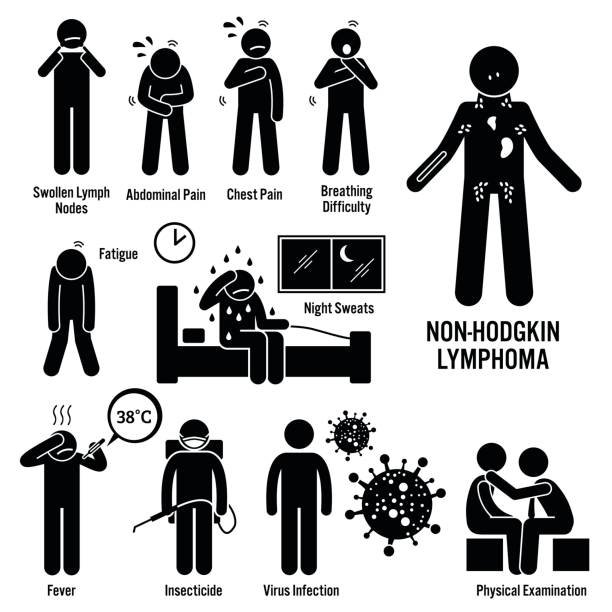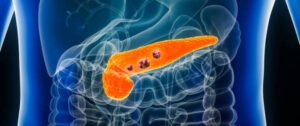
Fever and Cough May be Lymphoma! Learn About the 6 Symptoms, Staging and Treatment of Non-Hodgkin’s Lymphoma
Why do you get non-Hodgkin’s lymphoma? What treatments are available? We explain the causes, symptoms, staging and treatment of non-Hodgkin’s lymphoma.
What is non-Hodgkin’s lymphoma?
Lymphoma refers to the lymphocytes in the human body turning into malignant tumors. The growth location is not restricted and can spread from a single lymph node to the whole body. It is commonly known as lymphoma. Lymphoma can be further divided into Non-Hodgkin’s lymphoma (NHL) and Hodgkin’s lymphoma. In Taiwan, the incidence of non-Hodgkin’s lymphoma is much higher than that of Hodgkin’s lymphoma; among them, the following two types are the most common:
- Diffuse Large B Cell Lymphoma (DLBCL)
- Peripheral T-cell lymphoma, not otherwise specified; PTCL-NOS
Causes of Non-Hodgkin’s Lymphoma
The medical community currently believes that the possible causes of non-Hodgkin’s lymphoma are:
- Immune system insufficiency:
People who have received organ transplants and are taking immune preparations, or those who have immune system diseases, such as lupus or HIV infection, are more likely to develop non-Hodgkin’s lymphoma. - Bacterial and viral infections:
Viruses can affect lymphocytes and further transform into lymphoma; viruses that may cause infection, such as human T-lymphocyte virus type 1 HTLV-I, hepatitis C virus or Epstein-Barr virus. - Environment:
Long-term exposure to chemicals such as pesticides or hair dyes increases the risk of developing non-Hodgkin’s lymphoma.

Symptoms of non-Hodgkin’s lymphoma
Non-Hodgkin’s lymphoma will have 6 major symptoms depending on the site of invasion:
- Local or systemic lymphadenopathy:
Common areas of lymphadenopathy include the neck, crotch, and groin. - Liver and spleen system:
If the liver and spleen are enlarged, it will cause abdominal pain. - Intestinal system:
Lymphoma in the intestinal system can cause problems such as gastric ulcers, gastric bleeding, or gastric perforation. - Respiratory system:
Symptoms include coughing or difficulty breathing. - Bone marrow system:
If the bone marrow is invaded, hematopoietic function will deteriorate and cause anemia; thrombocytopenia will cause abnormal bleeding. - Nervous system:
Cancer cells invade the spinal canal, causing pain, abnormal sensation, and even mental abnormalities.
In addition to the above symptoms, patients may also experience fever, night sweats, weight loss, or fatigue.
Lymphoma stages: stage 1, stage 2, stage 3, stage 4
- Stage 1:
Only one lymph node has cancer cells. - Stage 2:
There are cancer cells in more than two lymph nodes, and the two lymph nodes are on the same side of the diaphragm. - Stage 3:
Cancer cells have spread to both sides of the diaphragm. - Stage 4:
Multiple lymph nodes in the body are invaded by cancer cells, or a single organ is invaded by distant cancer cells, such as the liver or lungs.
The above four stages are divided into stages A and B. If the patient has symptoms of fever exceeding 38 degrees Celsius, night sweats, and sudden weight loss of 10% within six months, the patient can be diagnosed as stage B. If the patient does not have these symptoms, it is stage A. .
Diagnostic approach to non-Hodgkin’s lymphoma
In addition to asking about medical history and clinical symptoms, doctors will also use the following methods to detect whether other organs have been invaded by cancer cells:
- Palpation:
Touch the neck, crotch, and groin for abnormal lymph node enlargement. - Blood draw:
If there is anemia or thrombocytopenia, it may be caused by non-Hodgkin’s lymphoma. - Chest X-ray:
Check whether the chest cavity has been invaded by cancer cells. - Abdominal ultrasound:
detects signs of damage to the liver or spleen. - Bone marrow biopsy:
Check whether the bone marrow has been invaded.

3 treatments for non-Hodgkin’s lymphoma
- Radiation therapy:
Mainly cobalt 60, mainly used to treat stage 1 and stage 2 patients. - Chemotherapy:
For patients with malignant tumors, chemotherapy is required. Chemotherapy is administered every 3 to 4 weeks, requiring a total of 6 to 8 courses. Some doctors will adopt an intensive treatment method to improve treatment efficiency, administer chemotherapy once a week, and use different drugs every other week to reduce resistance. Medicinal properties. - Mixed radiation and chemotherapy:
Suitable for patients whose tumors have invaded the nasal cavity, brain, spine, or whose tumors are larger than 8 centimeters.














